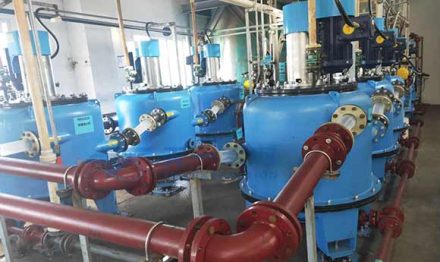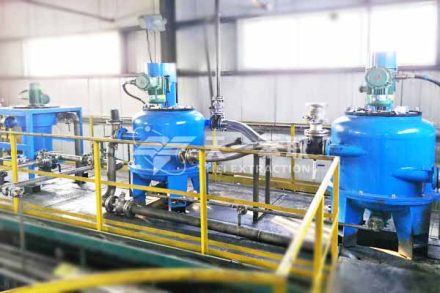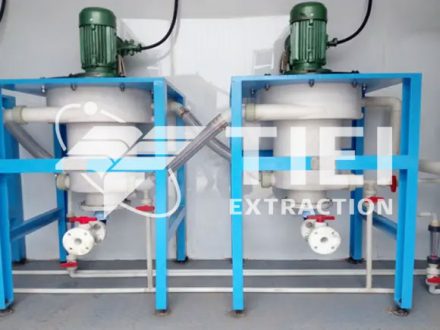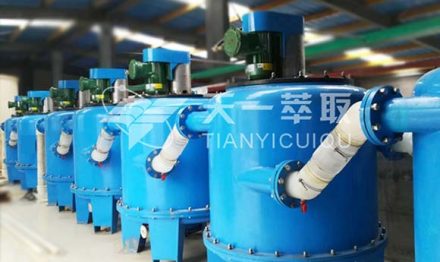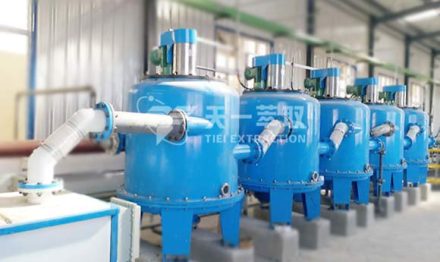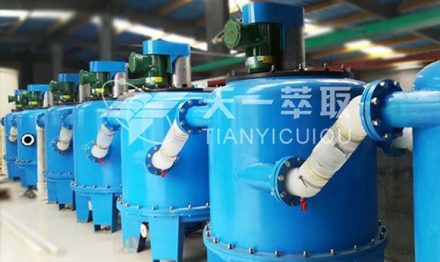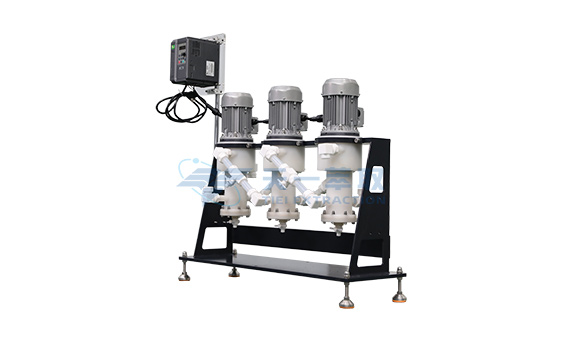
In many industrial fields such as chemical engineering, pharmaceuticals, environmental protection, and hydrometallurgy, it is often necessary to separate specific components from a liquid. In industry, this process is known as extraction. The efficiency of extraction directly determines the product’s purity, yield, and production cost. Today, let’s take a look at the core of extraction technology — single-stage extraction and multi-stage extraction.
Single-Stage Extraction
Single-stage extraction is the simplest and most basic extraction process. It involves only one thorough mixing and one separation. In this process, the feed solution containing the target substance (solute) is fully contacted with an immiscible (or partially miscible) extractant in a mixer, allowing the solute to transfer from the feed solution to the extractant. The two phases are then separated in a separator based on their density difference.
Single-stage extraction features simple equipment, low investment, and easy operation. However, it has a low extraction rate, high extractant consumption, and poor economic efficiency. It is mainly suitable for laboratory studies, systems with a very large distribution coefficient, or coarse separations where high yield is not required.
Multi-Stage Extraction
To achieve higher extraction efficiency, multiple single-stage extraction units can be connected in series, allowing the feed solution and extractant to pass through each stage in sequence. This process is known as multi-stage extraction. Depending on the flow pattern of the materials, multi-stage extraction can be divided into two main types: cross-current extraction and counter-current extraction.
Multi-Stage Cross-Current Extraction
Fresh feed solution comes into contact successively with multiple portions of fresh extractant — that is, each stage uses a new extractant. Although this method provides relatively high extraction efficiency, it requires a large amount of extractant, resulting in heavy downstream processing loads and high costs. It is suitable for systems with special extraction equilibrium characteristics or for processes handling very small quantities of material.
Multi-Stage Counter-Current Extraction
In this process, the feed solution and extractant flow in opposite directions through the system. Fresh feed enters from the outlet end, where it meets the nearly saturated extractant about to be discharged; while fresh extractant enters from the inlet end to contact the nearly depleted feed solution that is about to discharged.
Multi-stage counter-current extraction offers the highest extraction efficiency, minimal extractant consumption, high product purity, and is well-suited for continuous and automated production. It is ideal for large-scale industrial applications and processes demanding high product quality. For modern chemical production that pursues both economic efficiency and superior product performance, multi-stage counter-current extraction is undoubtedly the optimal choice.
Core Equipment: Tiei Extraction Centrifugal Extractor
Traditional extraction columns or mixer-settler units are bulky, have long residence times, and operate with relatively low efficiency. They are also prone to issues such as emulsification and clogging. The advent of the centrifugal extractor has completely revolutionized extraction processes, making it especially suitable for building efficient and compact multi-stage counter-current extraction systems.
1.Extremely High Extraction Efficiency
The powerful centrifugal force enables the two liquid phases to mix thoroughly and separate completely within seconds. The mass transfer efficiency is far superior to traditional extraction equipment, ensuring maximum theoretical extraction efficiency at each stage.
2.Short Residence Time and High Throughput
Ideal for handling emulsification-prone or unstable systems (such as biological materials), it reduces the risk of material degradation and perfectly meets the requirements of multi-stage counter-current continuous operation.
3.Compact Footprint and High Automation
The modular design allows multi-stage counter-current systems to be built in a highly compact form. A single multi-stage centrifugal extractor can replace an entire set of large mixer settlers. It supports fully automatic continuous production, significantly saving labor and space.
4.Excellent Sealing, Safe and Environmentally Friendly
The fully enclosed structure effectively prevents the leakage of volatile, toxic, or hazardous solvents, ensuring production safety and compliance with stringent environmental standards — particularly suited for the pharmaceutical and fine chemical industries.
5.Extensive Engineering Experience
Tiei Extraction has many years of experience serving diverse industries and can provide customized non-standard solutions — from standalone units to complete process packages — based on customers' specific material properties and multi-stage counter-current process requirements, ensuring perfect integration between equipment and process.
From simple single-stage extraction to efficient multi-stage extraction (including cross-current and counter-current modes), the evolution of separation technology marks the inevitable path from laboratory research to industrial-scale production. Among these, multi-stage counter-current extraction, with its outstanding efficiency and economic advantages, has become a cornerstone technology of modern industry. Choosing advanced equipment such as the Tiei Extraction Centrifugal Extractor to build your multi-stage counter-current system is a smart decision — one that enhances product competitiveness, achieves energy savings and emission reduction, and promotes sustainable, green production.
Email: sales@tieiextraction.com
Whatsapp: +86 19069612820

